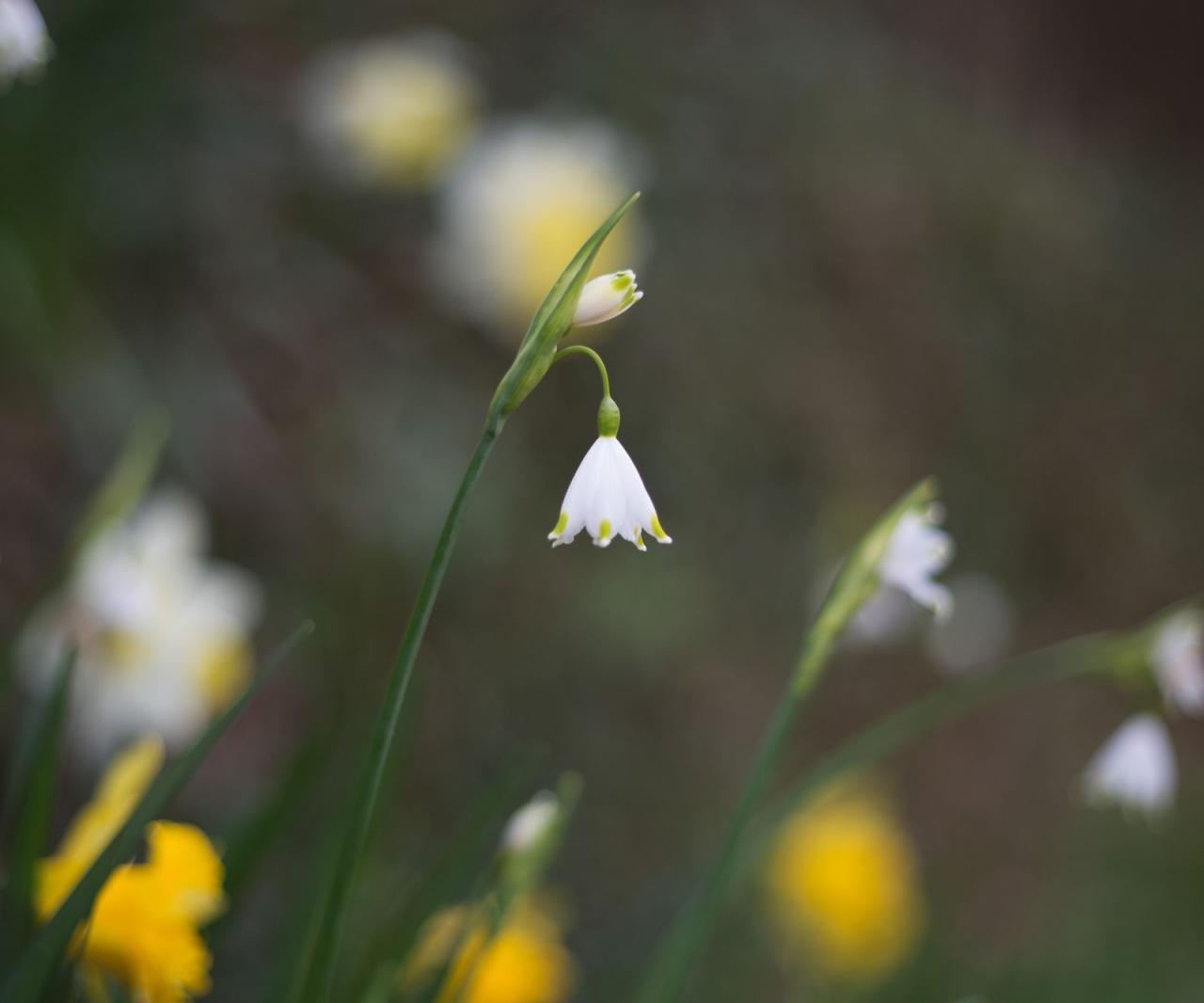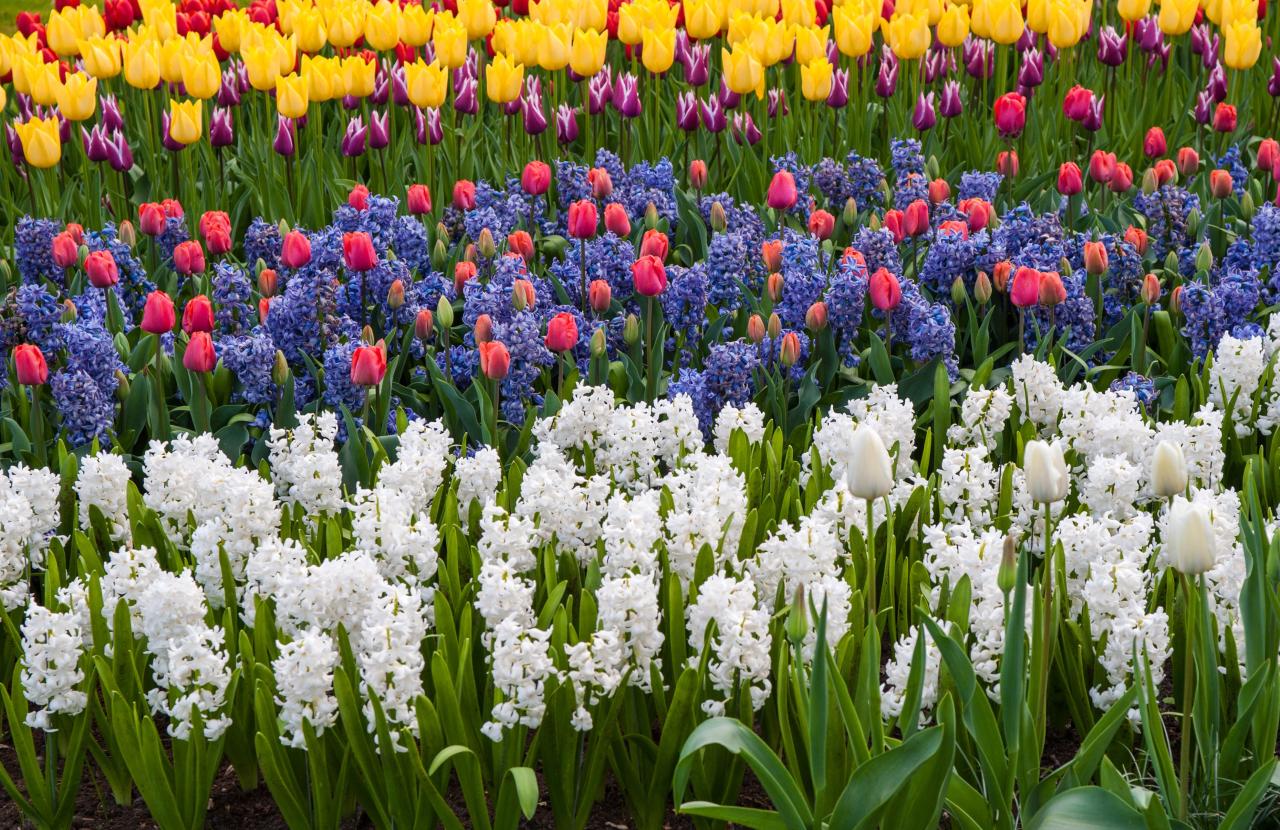The Best Bulbs For Early Spring Blooms You Should Plant In Fall – Imagine waking up to a vibrant tapestry of colors bursting forth from your garden, signaling the arrival of spring. These early bloomers offer a welcome respite from the winter’s slumber, bringing joy and a sense of renewal.
Planting bulbs in the fall ensures they have time to establish roots before the ground freezes, guaranteeing a spectacular display of flowers come springtime.
This guide delves into the world of early-blooming bulbs, providing a comprehensive overview of the best varieties for your garden. From the delicate grace of crocuses to the majestic beauty of tulips, we’ll explore a range of options, each with its unique charm and appeal.
We’ll also provide practical tips on planting, care, and enjoying these floral treasures. Let’s embark on a journey to create a breathtaking spring garden, one bulb at a time.
The Allure of Early Spring Blooms

After a long, cold winter, the arrival of spring is a welcome sight. The world awakens from its slumber, and nature bursts forth in a riot of color. Early spring blooms are particularly enchanting, as they herald the end of winter and the beginning of a new season.
These delicate flowers bring joy and beauty to our gardens and landscapes, reminding us that life is resilient and full of renewal. Planting bulbs in the fall is essential for enjoying the vibrant spectacle of early spring blooms. Bulbs are dormant during the winter months, but they store energy and develop their roots in the cool, moist soil.
When spring arrives, the bulbs have the resources they need to quickly emerge and produce their beautiful flowers.
Why Plant Bulbs in Fall?
Planting bulbs in the fall gives them the opportunity to establish a strong root system before the ground freezes. This is crucial for their survival and successful blooming in the spring. The cool temperatures and moisture of fall promote root development, allowing the bulbs to access nutrients and water more effectively.
Best Bulbs for Early Spring Blooms
Planting bulbs in the fall is a rewarding endeavor, promising a vibrant burst of color come springtime. These hardy plants require minimal maintenance, making them an excellent choice for novice gardeners. By choosing the right bulbs, you can enjoy a succession of blooms, starting with the first signs of spring and extending well into the season.
Best Bulbs for Early Spring Blooms
Here is a comprehensive list of bulbs that are ideal for adding a splash of color to your garden in early spring. Each entry includes information on its bloom time, color options, and planting depth, allowing you to select the perfect bulbs for your needs.
Bulb Type |
Bloom Time |
Color Options |
Planting Depth |
|---|---|---|---|
Crocus |
February
|
Purple, yellow, white, blue, striped |
3-4 inches |
Snowdrop |
January
|
White |
2-3 inches |
Scilla |
February
|
Blue, purple, pink, white |
2-3 inches |
Hyacinth |
March
|
Purple, blue, pink, white, red, yellow |
6-8 inches |
Crocus: These small, cup-shaped flowers are among the earliest bloomers, often pushing through the snow. They come in a wide array of colors, adding a cheerful touch to the garden. The flowers are typically 2-3 inches wide and have a delicate, fragrant scent.
Snowdrop: These graceful, nodding flowers are a symbol of hope and resilience, blooming in the coldest months of the year. They have a single, white, bell-shaped flower with a green tip. Snowdrops are often seen growing in woodlands and meadows.
Scilla: These star-shaped flowers resemble miniature hyacinths. They are known for their vibrant blue and purple shades, but they also come in pink and white. The flowers are typically 1-2 inches wide and grow in clusters.
Hyacinth: These fragrant flowers are a popular choice for early spring gardens. They have a distinct, trumpet-shaped bloom that comes in a variety of colors. Hyacinths prefer full sun to partial shade and well-drained soil.
Planting Bulbs for Success
Planting bulbs in the fall sets the stage for a vibrant display of early spring blooms. Proper planting techniques ensure healthy growth and abundant flowers.
Choosing the Right Location
The success of your bulb garden depends on selecting a suitable location. Bulbs thrive in areas that receive at least six hours of sunlight daily, especially during the spring. Consider the mature size of the bulbs and choose a location that provides ample space for them to grow.
Avoid planting bulbs in areas prone to standing water, as this can lead to rot.
Preparing the Soil
Bulbs prefer well-drained soil that is rich in organic matter. Before planting, amend the soil with compost or aged manure to improve its structure and fertility. Test the soil pH, aiming for a range of 6.0 to 7.0, which is ideal for most bulb varieties.
If the soil is too acidic, add lime; if it’s too alkaline, add sulfur.
Planting Depth and Spacing
The planting depth for bulbs varies depending on the variety. A general rule of thumb is to plant bulbs twice as deep as their height. For example, a bulb that is 2 inches tall should be planted 4 inches deep.
Spacing between bulbs also depends on the variety, but generally, allow for 3 to 6 inches between bulbs.
Protecting Bulbs from Pests and Diseases
Bulbs are susceptible to pests and diseases, but you can take steps to protect them. Avoid planting bulbs in areas where pests or diseases have been present. Rotate your bulb plantings each year to prevent the buildup of pathogens.
Consider using a fungicide or insecticide, especially if you have a history of pest or disease problems. You can also use a layer of mulch to deter pests and regulate soil temperature.
Bulb Care After Planting
Planting bulbs is just the first step in enjoying their vibrant blooms. Providing proper care after planting is crucial to ensure healthy growth and bountiful flowers.
Watering Bulbs After Planting
Watering bulbs after planting is essential for their establishment. Newly planted bulbs need moisture to encourage root development. Water deeply and thoroughly, ensuring the soil is evenly moistened. However, avoid overwatering, as this can lead to root rot.
Ensuring Adequate Drainage
Adequate drainage is vital to prevent root rot. Bulbs are susceptible to damage when soil becomes waterlogged. When planting bulbs, choose a location with well-drained soil. If your soil is prone to waterlogging, amend it with compost or other organic matter to improve drainage.
You can also create raised beds for planting bulbs to enhance drainage.
Protecting Bulbs From Harsh Winter Conditions
In regions with harsh winters, protecting bulbs from extreme cold is crucial. A layer of mulch can help insulate bulbs and prevent them from freezing. Mulch also helps regulate soil temperature, preventing fluctuations that can harm bulbs. Apply a 2-3 inch layer of organic mulch, such as shredded leaves, bark chips, or straw, over the planting area.
The Role of Mulch in Protecting Bulbs and Enhancing Soil Health
Mulch plays a significant role in protecting bulbs and enhancing soil health. Mulch acts as a barrier against harsh winter conditions, preventing temperature fluctuations that can damage bulbs. Additionally, mulch helps suppress weeds, conserves moisture, and enriches the soil over time.
As mulch decomposes, it adds organic matter to the soil, improving its structure and fertility.
Enjoying Your Early Spring Blooms

After all the hard work of planting your bulbs, the most rewarding part is finally arriving—watching your early spring blooms burst forth in vibrant colors. But even after the show begins, there are a few essential care steps to ensure your bulbs thrive and continue to bring joy for years to come.
Caring for Bulbs During Their Blooming Period
While your bulbs are blooming, they require a bit of TLC to ensure they can store enough energy for the following year’s blooms.
- Water regularly:Keep the soil consistently moist, especially during dry periods. This helps the bulbs stay hydrated and produce vibrant blooms.
- Fertilize sparingly:A light application of balanced fertilizer can help replenish the nutrients the bulbs use during flowering. Avoid over-fertilizing, which can damage the bulbs.
- Protect from frost:If you live in an area with late frosts, be prepared to protect your bulbs. A simple covering of burlap or frost cloth can help shield them from damage.
Extending the Blooming Season of Bulbs
The blooming period of bulbs can vary depending on the variety and the weather. However, there are a few tricks you can use to extend the enjoyment of your early spring blooms:
- Choose bulbs with staggered blooming times:Select a mix of bulbs that bloom at different times, creating a continuous display of color throughout the spring. For example, snowdrops, crocuses, and hyacinths bloom early, followed by tulips, daffodils, and alliums.
- Plant bulbs in different locations:By planting bulbs in various microclimates in your garden, you can create a longer blooming season. For example, a sunny location will encourage earlier blooms, while a shady spot might delay flowering.
- Deadhead spent blooms:This practice encourages the bulb to focus its energy on producing new foliage and storing energy for the following year, rather than on seed production.
Deadheading Spent Blooms, The Best Bulbs For Early Spring Blooms You Should Plant In Fall
Once the blooms of your bulbs begin to fade, it’s important to deadhead them, which means removing the spent flowers. This practice helps the bulb focus its energy on building up food reserves for next year’s blooms.
- Cut the flower stem at the base:Remove the flower head by cutting the stem just above the soil level. This prevents the bulb from wasting energy on seed production.
- Don’t remove the foliage:The foliage is essential for the bulb to store energy. Allow the foliage to die back naturally, which can take several weeks.
Leaving Foliage to Die Back Naturally
While it might seem tempting to tidy up your garden and remove the foliage after the flowers fade, it’s crucial to resist the urge. The foliage plays a vital role in the bulb’s life cycle.
- Foliage is the bulb’s food factory:Through photosynthesis, the leaves capture sunlight and convert it into energy, which is stored in the bulb for the following year’s blooms.
- Don’t cut back foliage prematurely:Cutting back the foliage too early will deprive the bulb of essential nutrients and weaken it, potentially reducing the number and quality of flowers in the following year.
- Allow foliage to yellow and wither:Once the foliage has naturally turned yellow and withered, it’s safe to cut it back.
Final Review
By planting bulbs in the fall, you’re not only setting the stage for a vibrant spring garden, but also embarking on a journey of anticipation. As the winter months pass, the promise of those early blooms will keep you warm and excited for the arrival of spring.
So, get ready to embrace the beauty and joy of early spring blooms, and let your garden be a testament to the magic of nature’s cycle.
Expert Answers: The Best Bulbs For Early Spring Blooms You Should Plant In Fall
What is the best time to plant bulbs in the fall?
The ideal time to plant bulbs in the fall varies depending on your region’s climate. Generally, aim for 6-8 weeks before the first frost. This allows the bulbs to establish roots before the ground freezes.
Do I need to fertilize bulbs after planting?
While not strictly necessary, fertilizing bulbs after planting can promote healthy growth and abundant blooms. Use a balanced fertilizer specifically designed for bulbs.
What if I miss the fall planting season?
If you miss the fall planting window, you can still plant bulbs in early spring. However, they may not bloom as profusely in the first year. Choose varieties that are known to perform well with spring planting.

